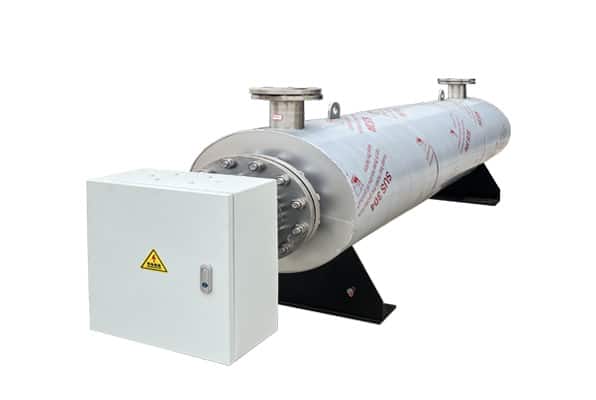I. Overview
Electric air heaters https://8ruiyan.com/en/all-air-heaters/provide clean, precise, and flexible air heating for industrial applications. In modern industrial production processes, an increasing number of systems place higher demands on hot air quality and temperature control. Particularly in environments requiring stable heat sources, clean air, high temperature resistance, and corrosion resistance, electric air heaters have become a crucial solution for air heating challenges due to their rapid response, uniform heating, pollution-free operation, and flexible control.
This article explores the value and technical implementation paths of electric air heaters in various process systems. It examines design principles, key selection points, practical applications, and troubleshooting, drawing on current industry case studies.

II. Design Principles of Electric Air Heaters
Electric air heaters directly or indirectly heat air using built-in electric heating elements. Thermal energy, primarily transferred via radiation and convection, is rapidly conducted into the flowing air, achieving the desired temperature increase.
The core design logic includes:
- Increasing thermal energy conversion efficiency;
- Ensuring stable outlet air temperature;
- Guaranteeing safety during prolonged continuous operation;
- Enabling intelligent regulation of parameters like airflow volume and temperature.
III. System Structure and Functional Components
- Heating Chamber Module
- High-temperature resistant metal chamber (stainless steel or alloy steel);
- Internally designed air channels to ensure uniform hot air flow;
- Mirror-polished surfaces to reduce dust accumulation and oxidation.
- (Example: 200KW Air Electric Heater)
- Electric Heating Tube Assembly
- Material: High nickel-chromium alloy;
- Filled internally with high thermal conductivity insulating magnesium oxide powder;
- Covered externally with a high-temperature protective sheath to effectively prevent insulation layer aging.
- Control System Module
- Temperature acquisition via thermocouple or RTD (Resistance Temperature Detector);
- Intelligent instruments for setting temperature range and overtemperature alarms;
- Control output via SSR (Solid State Relay) or contactor relays;
- Expandable to PLC systems for multi-stage heating coordination.
- Safety and Protection System
- Equipped with dry-firing protection, over-current protection, leakage protection, and short-circuit protection devices;
- Fan interlock control: heating shuts off if airflow stops;
- Suitable for explosive atmospheres; explosion-proof terminal boxes and control enclosures can be selected.
IV. Design Selection and Application Considerations
- Calculate Thermal Power Requirement
Use the following formula for estimation:Q = ρ × V × c × ΔT × 1.2
Where:Q: Required Thermal Power (kW)ρ: Air Density (kg/m³)V: Airflow Volume (m³/h)c: Specific Heat Capacity of Air (approx. 1.005 kJ/kg·K)ΔT: Required Temperature Rise (°C)
- Determine Temperature Range
- Below 100°C: Standard finned tube heaters can be used;
- 200°C – 450°C: Stainless steel sheathed heating tubes required;
- Up to 600°C: Ceramic heating elements with cast steel housing designs are needed.
- Air Velocity and Flow Control
- Recommended air velocity: not lower than 2-5 m/s to prevent overheating of heating elements;
- Install air pressure protection to ensure interlocked operation of fan and heater.
- Special Condition Considerations
- Corrosive gases: Specify PTFE-coated heating elements;
- Explosive atmospheres: Select structures meeting required explosion-proof ratings;
- High-humidity environments: Add anti-condensation measures; use moisture-resistant heating elements.
V. Application Case Studies
- Semiconductor Industry: Clean hot air reflow processes, temperature control precision ±1°C;
- Textile Printing & Dyeing: Hot air dryer integration, improving energy efficiency by over 20%;
- Tobacco Processing: Constant temperature air supply, dehumidification & heating, significantly increasing first-pass yield rate;
- New Energy Lithium Battery Production: High-cleanliness hot air systems ensuring product consistency.
VI. Operation, Maintenance, and Common Issues
- Routine Maintenance Recommendations:
- Monthly inspection of heating tube surfaces for dust accumulation;
- Regular cleaning of inlet air filters to prevent insufficient airflow;
- Check electrical terminals for looseness or signs of overheating;
- Calibrate temperature sensors to ensure accuracy.
- Common Problems:
| Fault Symptom | Possible Cause | Recommended Action |
| Temperature fails to rise | Heating tube open circuit | Check tube resistance; replace if necessary |
| Uneven outlet temperature | Faulty controller or poorly positioned sensor | Replace controller; adjust sensor location |
| Control cabinet trips | Electrical short circuit or overload | Check circuit insulation and current load |
VII. Conclusion
With the advancement of intelligent manufacturing and thermal process automation, electric air heaters not only hold a significant position in traditional industrial applications but will also play a major role in emerging fields like new energy, clean manufacturing, and energy conservation. Future development will increasingly rely on high-efficiency component materials, intelligent control algorithms, and modular design, making them a key driver in enhancing the reliability and efficiency of thermal systems.
For further consultation, please contact our technical team for expert advice.
Whatsapp:86-19106101570
wechat:86-19106101570
email:nieyili@cnryan.com
